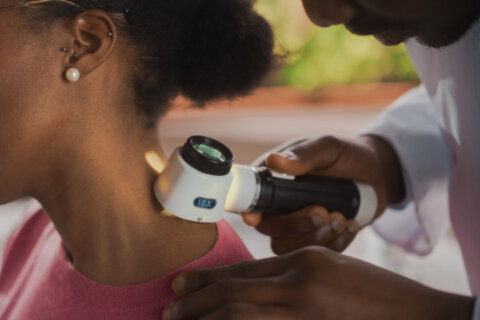What you don’t know can hurt you
Take a look around your gym: Most of the exercises you see people performing — maybe even some that are part of your regular routine — a trainer would never do.
Why? Because they are ineffective, inefficient or could increase your risk of injury. To ID the exercises to nix from your workout, we talked with top trainers and physical therapists about the common exercises you’ll never see them doing. Bonus: We round up the moves you should do instead.
Leg-Extension Machine
Since these machines only work your quadriceps muscles, they’re not ideal for anyone trying to get in a quick, total-leg workout, burn many calories or train the muscles of the lower body to work together, says physical therapist Spencer Ulrich, clinical director of Professional Physical Therapy in New Jersey. It’s also worth noting that some leg-extension machines put the greatest amount of stress on your quads when your knee is fully extended, a position in which the muscle can actually handle the least amount of weight. This can put your knee at risk of injury.
Do this instead: “I turn to the leg-press machine or a squat. These are both examples of exercises that engage several muscle groups of your lower extremities, including your quads, hamstrings, glutes and calves,” Ulrich says.
Behind-the-Neck Lat Pulldown
“This puts the shoulders in a very scary position,” says certified strength and conditioning specialist Kourtney A. Thomas, owner of Lagniappe Fitness in St. Louis. It increases your risk of unnecessary joint compression and degeneration. And since most people don’t actually have the mobility to easily move their arms behind their shoulders, it risks upper back injury.
Do this instead: A front pulldown and pullup (both assisted and unassisted) will strengthen your entire back, but without overly stressing your shoulder joints, she says. Plus, since your arms are designed to move in front of your body, not behind it, you’ll be training your body in a more functional way.
Ab Crunch Machine
“I’ve had too many patients injure their low backs with this exercise,” says Michael Silverman, director of rehab and wellness at Northern Westchester Hospital in New York. “Oftentimes, people are not set up properly and torque themselves in positions that are not appropriate for their spines. This isolated flexion and extension could put too much pressure on the low back and potentially injure a disc.”
Do this instead: “I recommend both front and side planks to work the abdominals,” he says. By keeping the spine in its natural, neutral alignment, you not only strengthen your core muscles, but better train them to stabilize and protect your spine. Plus, you don’t put undue stress on your discs.
Shrugs
“They don’t up your risk of injury, but, basically, I see no need for them,” Thomas says. “There are so many other exercises that involve the traps. And in general, the traps are overworked anyway.”
Do this instead: “I stick with the face pull,” she says. Instead of simply isolating the traps, this move also works the lats in the mid-back, which are weak in a lot of people.
Good Morning
When executing this weight-based exercise, it’s difficult to maintain proper form, especially when you begin to fatigue, risking injury to the lower back and neck, say trainers Bonnie Micheli and Tracy Roemer, co-founders of Shred415 in Chicago.
Do this instead: The dead lift is a better and very effective approach, not just to strengthen your back, but your legs and core as well, they say. The dead lift — pretty much just bending down and picking something up — is a fundamental movement in our everyday lives.
Front Dumbbell Shoulder Raise
“The main reason I avoid this exercise is due to the possibility of a shoulder impingement,” Silverman says. “You often end up with an internal rotation moment at the shoulder that can become a source of pain or impingement, especially with high repetitions.”
Do this instead: “I turn to an exercise used by many rehab professionals called a scaption,” he says. “By raising your arms at a 45-degree angle, with your thumbs pointed toward the ceiling [while holding weights], you avoid impingement at the top of the motion while still strengthening the muscles of the shoulder.”
Upright Row
Like No. 6, this one involves internally rotating the shoulder, Thomas says. What’s more, since most people can and do lift pretty heavy weights while performing an upright row, each rep subjects the ball-and-socket shoulder joint to lot of weight. Over time, damage to the joint’s tendons can occur.
Do this instead: “An overhead press is a much safer option for working the shoulders and triceps,” she says. Focus on maintaining a tall, neutral spine throughout the entire movement, and you’ll also feel your core working.
More from U.S. News
7 Reasons No One Likes You at the Gym
The 10 Best Exercises You Can Do for the Rest of Your Life
7 Exercises That Trainers Wouldn’t Be Caught Dead Doing originally appeared on usnews.com







